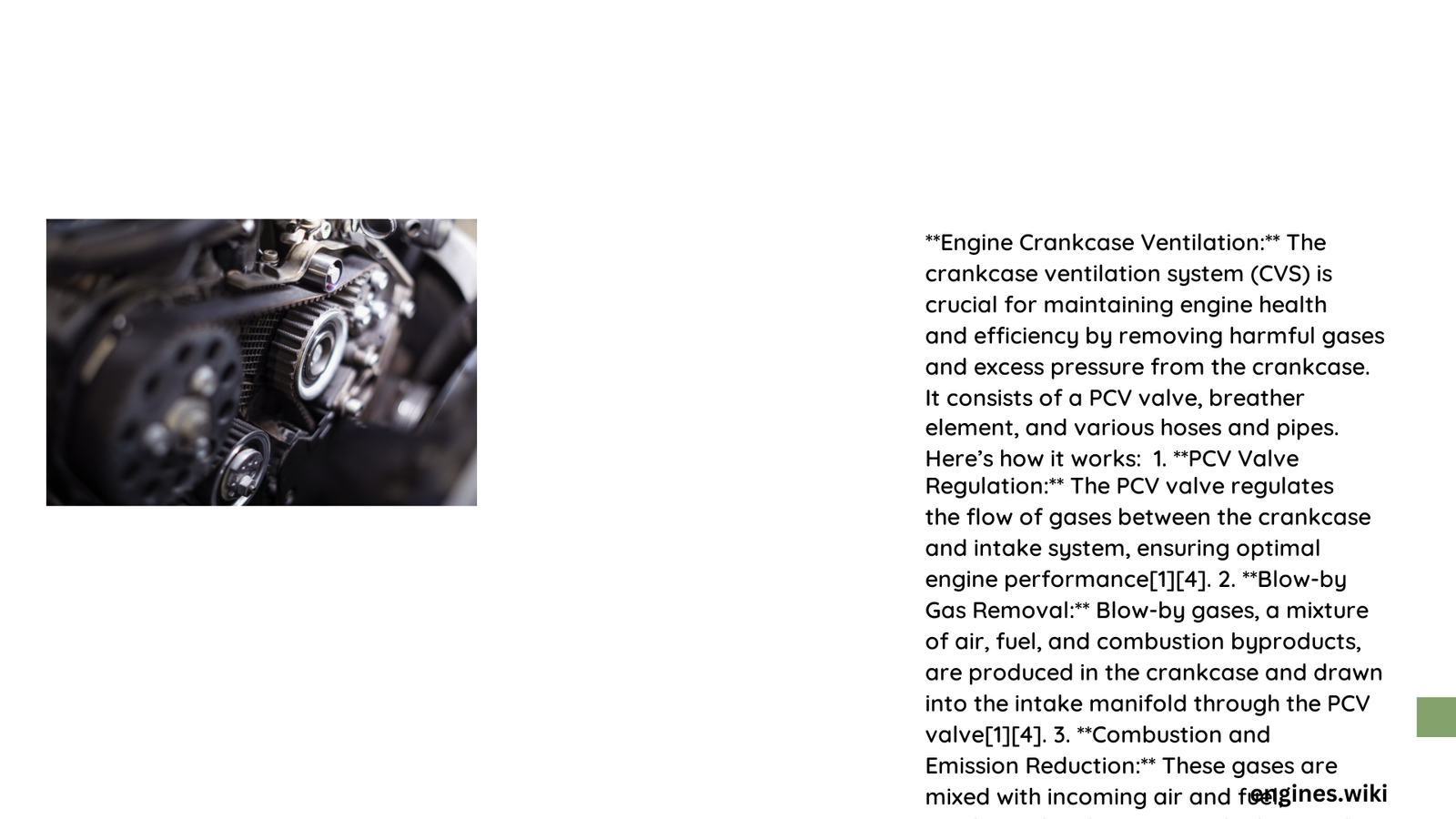Engine crankcase ventilation is a sophisticated system designed to manage internal engine pressure, remove harmful gases, and prevent oil contamination. By regulating blow-by gases and maintaining precise pressure ranges, this critical mechanism ensures engine efficiency, reduces wear, and minimizes environmental impact through controlled emissions management.
What is Engine Crankcase Ventilation?
Engine crankcase ventilation represents a sophisticated engineering solution that manages internal engine pressures and gas accumulation. This system plays a crucial role in maintaining optimal engine performance and longevity.
Why Does Crankcase Pressure Matter?
| Pressure Range | Impact on Engine |
|---|---|
| -3 to +2 inches W.C. | Optimal Performance |
| Above +2 inches W.C. | Potential Mechanical Stress |
| Below -3 inches W.C. | Potential Oil Leakage |
Key Components of Crankcase Ventilation
- PCV (Positive Crankcase Ventilation) Valve
- Regulates gas flow
- Controls pressure dynamics
-
Adapts to engine operating conditions
-
Filtration Elements
- Removes oil mist and contaminants
- Prevents particulate circulation
- Maintains system cleanliness
How Does Crankcase Ventilation Work?

The crankcase ventilation process involves several intricate mechanisms:
- Gas Extraction: Blow-by gases are extracted from the crankcase
- Pressure Regulation: Maintains slight negative pressure
- Gas Redirection: Routes gases back into the intake system for reburning
Performance Implications
Effective crankcase ventilation delivers multiple performance benefits:
- Reduced engine friction
- Minimized oil contamination
- Enhanced fuel efficiency
- Lower emissions output
What Happens Without Proper Ventilation?
Neglecting crankcase ventilation can lead to severe consequences:
- Mechanical Stress: Increased internal pressure
- Oil Degradation: Accelerated contamination
- Performance Reduction: Decreased engine efficiency
- Potential Failure: Gasket and seal damage
Flow Rate Considerations
Different engines require specific ventilation characteristics:
- Small engines: 10 CFM (283 L/min)
- Large industrial engines: Up to 50 CFM (1416 L/min)
Maintenance Best Practices
- Regular filter inspection
- Check valve functionality
- Monitor pressure ranges
- Replace components as recommended
Advanced Diagnostic Techniques
- Pressure gauge monitoring
- Periodic system flow testing
- Thermal imaging analysis
Technical Specifications
Typical Pressure Ranges:
– Minimum: -7.5 mbar
– Maximum: +5 mbar
Material Specifications:
– Housing: Epoxy-coated steel
– Filters: Micro-glass fiber media
– Valves: Stainless steel components
Emerging Technologies
Modern crankcase ventilation systems are evolving with:
– Smart sensor integration
– Advanced filtration technologies
– Real-time pressure monitoring
Future Outlook
The future of engine crankcase ventilation focuses on:
– Enhanced efficiency
– Lower environmental impact
– Predictive maintenance capabilities
Conclusion
Engine crankcase ventilation remains a critical yet often overlooked system in automotive engineering. Proper understanding and maintenance can significantly extend engine life and performance.
Expert Recommendations
- Consult manufacturer guidelines
- Perform regular system checks
- Invest in quality components
Reference:
– Parker Hannifin Crankcase Ventilation Documentation
– SAE Technical Papers on Crankcase Ventilation
– Automotive Engineering Journal
